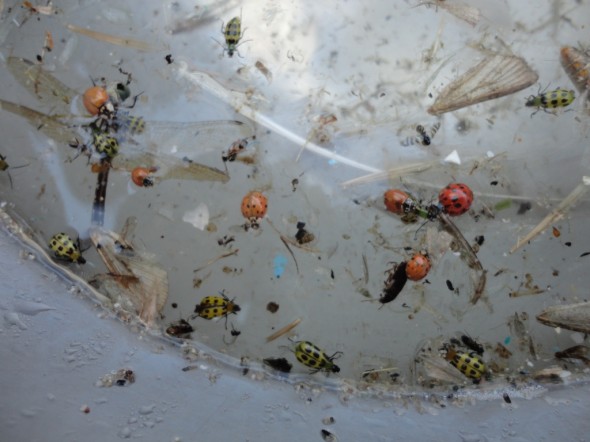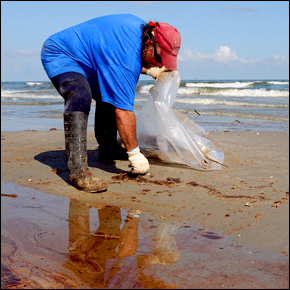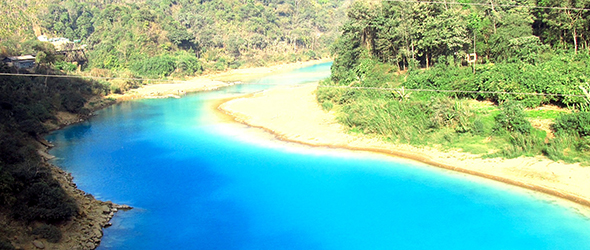On the Trail of the Tiny & Troublesome Great Lakes Microplastic
Circle of Blue reporter Codi Kozacek talks with scientists who are uncovering millions of microscopic plastic beads in the Great Lakes.

A research team sailing on a replica tall-ship made waves last year by conducting the first ever survey of microplastics in the Great Lakes—which found vast quantities of particles less than 5 millimeters (0.2 inches) in size in lakes Erie, Superior, and Huron. After a second summer of testing that also included lakes Michigan, Ontario and St. Clair, the team is starting to build a knowledge base and is inspiring further research into this type of freshwater pollution, which has been studied more extensively in marine ecosystems.
Microplastics can form in a variety of ways, but the type being found in the Great Lakes point to a unique source.
“Some microplastics result from the photo-degradation of larger plastic items, but given the perfectly spherical nature of the majority of the microplastics we found, the source would be to a direct release,” said Sam Mason, a professor at the State University of New York at Fredonia who led the Great Lakes research. “Based on our analysis we believe that these microplastics are microbeads found in many common consumer products, like facial washes, toothpastes and body scrubs.”
These microbeads are washed directly into municipal water systems, where aging water treatment plants aren’t designed to remove them. Ultimately, they can end up in surface waters and fish.
“The problem is the sizes; they are small, really microscopic,” Lorena Rios-Mendoza, a chemist at the University of Wisconsin-Superior who is also a leading researcher on the microplastics team, told me. “They can persist more than other pollutants, and they can easily mimic the natural food [of fish].”
There are still a plethora of research questions that remain to be answered. Where exactly are microplastics coming from? What type of fish are eating microplastics? How might microplastics affect human health? Last year’s survey has sparked real interest among Great Lakes scientists and state agencies, and Mason said that she is also collaborating on a microplastics study on a lake in Mongolia. Companies like Johnson& Johnson, L’Oreal, Unilever, and the Body Shop are also taking note, making commitments to eliminate their use of microbeads in the next few years, Scientific American reported.
“The community has the option to decide what they want to use, if they want to use products that contain plastics or not,” Rios-Mendoza said. “You can read the labels, and if it contains pellets, don’t use it. We need to reuse, recycle, and reduce our use of plastic, and in the end, we can refuse to use plastic.”
Mason said that the team expects to have preliminary results from this year’s survey by December, and it is an issue I plan to watch as I report on the 21st century challenges facing the Great Lakes.
What questions do you have about microplastics in the Great Lakes? Does knowing about microplastics make you reconsider the products that you use? Contact Codi Yeager
–Codi Kozacek
Reporter, Circle of Blue
A news correspondent for Circle of Blue based out of Hawaii. She writes The Stream, Circle of Blue’s daily digest of international water news trends. Her interests include food security, ecology and the Great Lakes.
Contact Codi Kozacek











Leave a Reply
Want to join the discussion?Feel free to contribute!